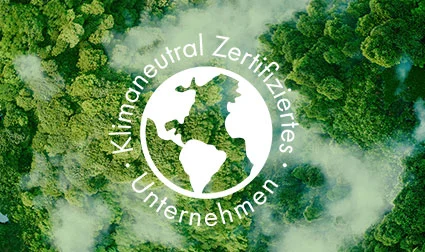Climate change: a global challenge
How is our climate changing? What is the reason for this and what can we do about it? Questions about climate change are becoming ever louder and more urgent.
GLOBAL CHANGE
In order to understand and assess the dangers posed by global climate change and which recommendations for action make sense in order to mitigate or even prevent the irreversible consequences of climate change, it is advisable to take a closer look at the phenomenon and try to understand what exactly is happening.
Basically, the term ‘climate change’ describes the cooling or warming of the climate over a long period of time. But what are the physical correlations?

NATURAL GREENHOUSE GASES
Here’s a little background information: the earth is surrounded by a layer of air that looks bluish from space, known as the atmosphere. This protects us from the cold and harmful radiation from space. It consists of a mixture of chemical substances, or more precisely gases. Nitrogen makes up the largest proportion (78%), 21% is oxygen, which we need to breathe, 0.9% is the noble gas argon and the remaining 0.1% are trace gases. These include methane, nitrogen oxides and, above all, carbon dioxide, or C02 for short.
Although the proportion of CO2 is quite low at 0.04%, it has a considerable influence on our climate. This can be seen in the greenhouse effect, which heats up our planet, so to speak. The naturally occurring greenhouse gases CO2, methane and nitrous oxide ensure that the Earth has an average temperature of +15 degrees Celsius, so that life is possible on it – without the natural greenhouse effect it would be around -18 degrees Celsius. The temperature increase necessary for life is due to the absorption and partial re-radiation of the heat radiation emitted from the interior of our planet by the greenhouse gases.

ARTIFICIAL GREENHOUSE GASES
The problem first develops with artificial greenhouse gases: The so-called anthropogenic, i.e. man-made, greenhouse effect describes the increase in greenhouse gases through emissions, i.e. the emission of large amounts of C02, methane and nitrous oxide. This ultimately leads to a rise in global temperature. It is therefore essential to reduce greenhouse gas emissions, especially C02, in order to mitigate climate change.














